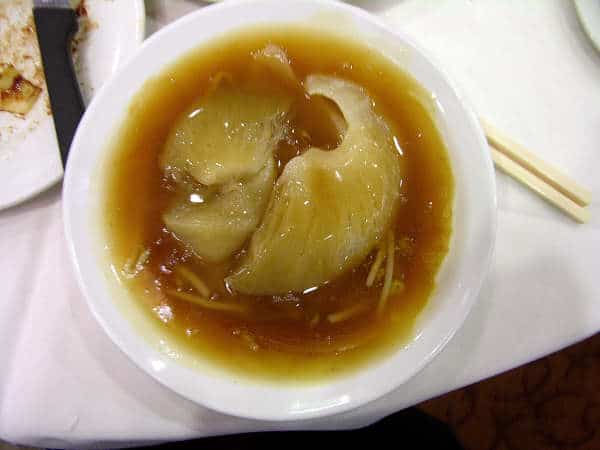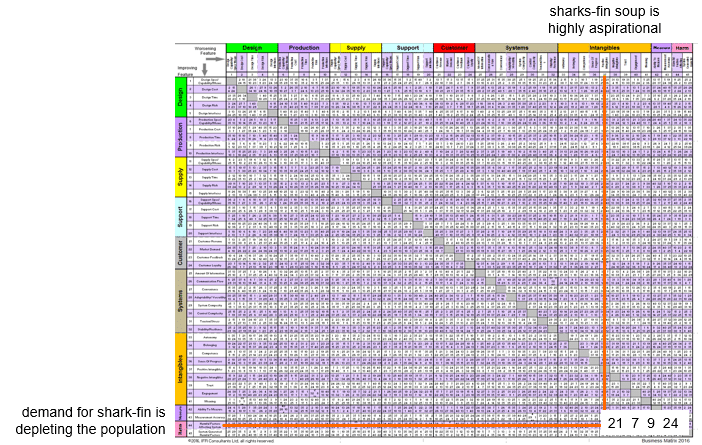
As a corollary to the Principle 9 solution from yesterday’s micro case study, here’s another, more recent example. This time from China. A place where, for various historical reasons, society’s elites attached a high level of prestige to the consumption of shark fin. Usually in the form of soup. Unlike sauerkraut, shark fin doesn’t taste of anything. It has virtually no nutritional value either. And, if the bowlful I was once ‘honoured’ with by hosts apparently keen to impress me is typical, it also has the approximate texture of old linoleum. As a dining experience, it ranks right up there with my experience at the ‘Total Cow Solution’ restaurant in Beijing, where I was encouraged to consume the ‘special’ nine-course dinner, each course of which featured a different part of a cow (the first course was testicle in blood jelly. I didn’t ask what was in the subsequent courses).
Anyway, cows aside, by 2010, the prestige-seeking masses of China were consuming seventy-three million sharks a year. Which, the authorities, calculated, was no longer sustainable.
Something needed to be done. The shark carnage needed to stop, but eating shark fin soup was still very aspirational and being seen to be consuming it made people feel like they were somehow part of the elite. Here’s what the conflict looks like mapped onto the Business version of the Contradiction Matrix:

Enter Prior Counteraction, again.
Firstly, a public information campaign was launched. It was headed by a suite of prestigious celebrities and elites including basketball star Yao Ming and – importantly – the President, who instructed that sharks-fin be removed from all official banquets
Between 2011 and 2018 shark consumption in China fell by 80%. Not quite as effective as sauerkraut’s impact on scurvy, but on the other hand, nearly sixty million sharks a year are likely grateful.
